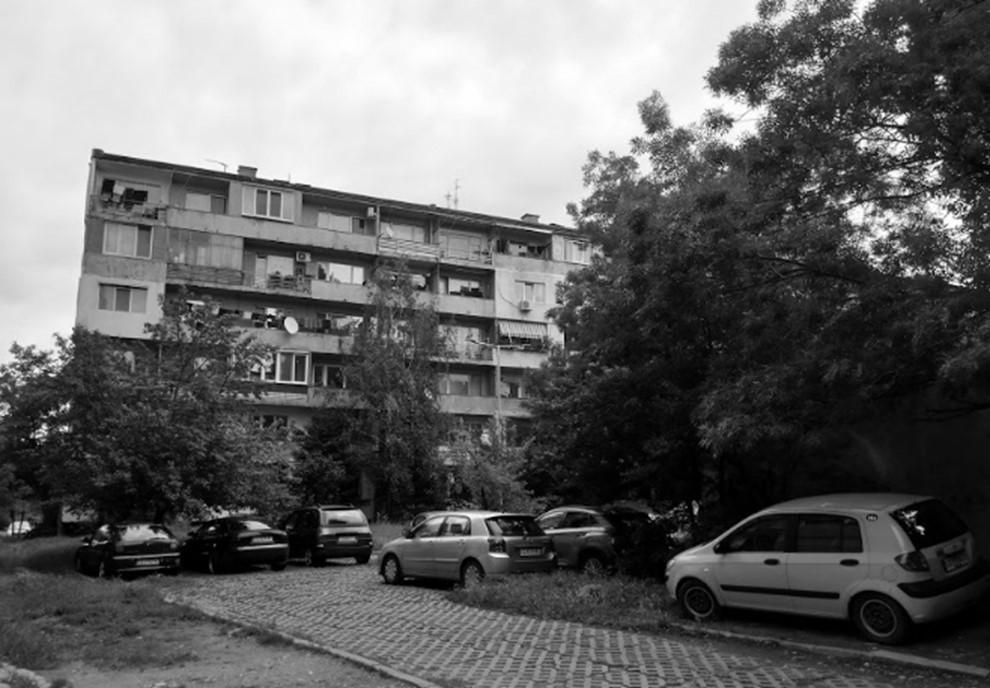 Kazalo
Kazalo
Slike

Slika 1: Figure 1 (the study area): 1a) location within the compact city of Sofia; 1b) healthy corridor area and co-design workshop locations; 1c) names and locations of the housing estates (based on: Internet 4; Internet 5).

Slika 2: Figure 2: Sitting places in front of a block entrance (photo: authors)

Slika 3: Figure 3: Cars parked in the inter-block space (photo: authors)

Slika 4: Figure 4 Workshop locations and typology of inhabitants’ proposals for interventions in public space. Number of inhabitants’ proposals by type: access and comfort of use (black); healthy living (grey); and social action and interaction (white) (illustrati
Urbani izziv Leto 32, št. supplement, december 2021
: 91-105
(Članki)
doi: 10.5379/urbani-izziv-en-2021-32-supplement-6
Avtor
Milena Tasheva-Petrova
Department of Urban Planning, Faculty of Architecture, University of Architecture, Civil Engineering and Geodesy, Sofia, Bulgaria
tasheva_far@uacg.bg
Elena Dimitrova
Department of Urban Planning, Faculty of Architecture, University of Architecture, Civil Engineering and Geodesy, Sofia, Bulgaria
eldim2002@gmail.com
Angel Burov
Department of Urban Planning, Faculty of Architecture, University of Architecture, Civil Engineering and Geodesy, Sofia, Bulgaria
burov_far@uacg.bg
Irina Mutafchiiska
Department of Urban Planning, Faculty of Architecture, University of Architecture, Civil Engineering and Geodesy, Sofia, Bulgaria
irina.mutafchiiska@gmail.com
Naslov članka
Re-claiming space for public life: messages from the northwestern periphery of Sofia
Povzetek
A case-study based qualitative research on public space and public life in four housing estates in the north-western periphery of Sofia provides the basis for re-thinking urban legacy and the Modernist concept of public interest, once placed in the core of urban planning. The expert estimation of the current physical state and functioning of open public space in the housing estates, initially developed from the 1960s to 1980s, is compared to current inhabitants’ estimations of the potential of public space to respond to their needs and visions regarding its quality. The capacity and limitations of local inhabitants to articulate a common vision of public space in dialogue with experts and authorities are discussed. The authors claim that further urban research is needed to conceptualize present visions for public interest, public life, and public space in the transforming housing estates in Central and Eastern Europe in order to enhance the effectiveness of inclusive planning approaches for urban regeneration.
Ključne besede
urban research, public space, Modernist housing estates, Sofia, inclusive urban regeneration